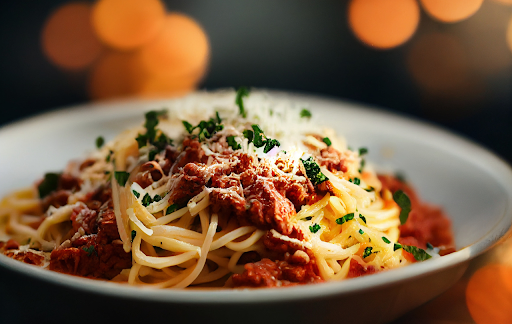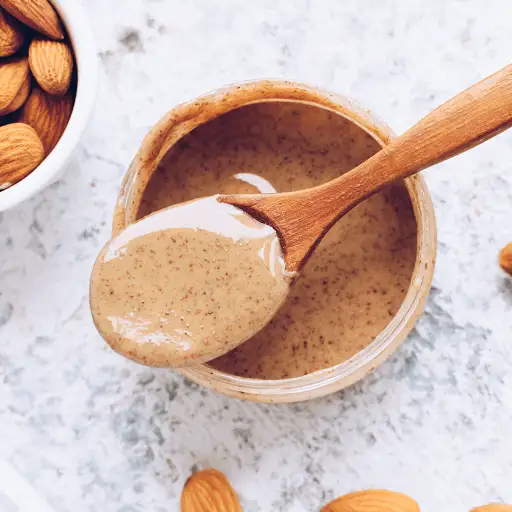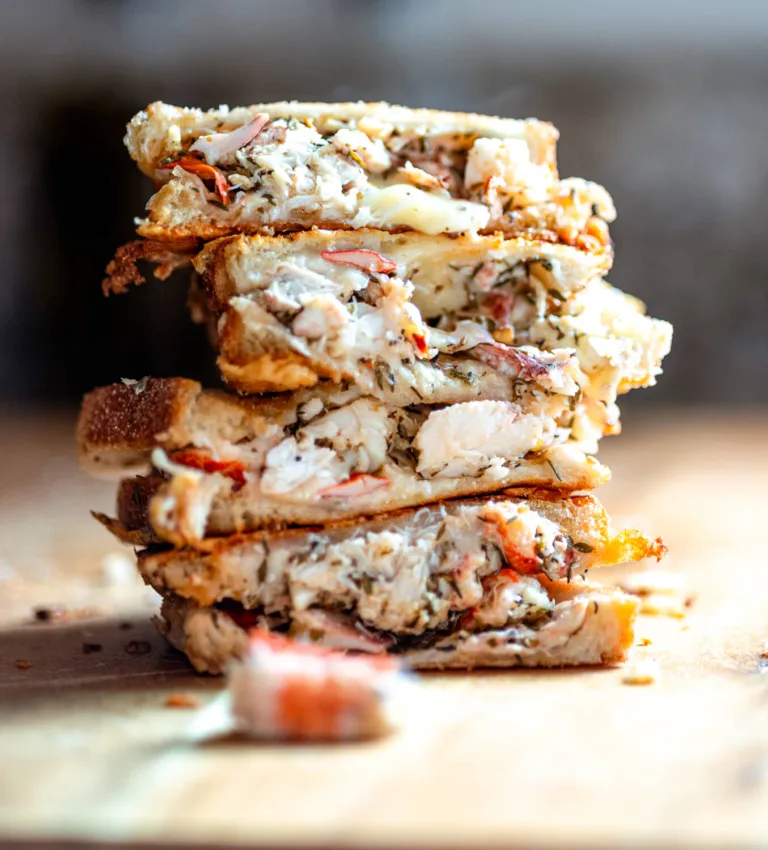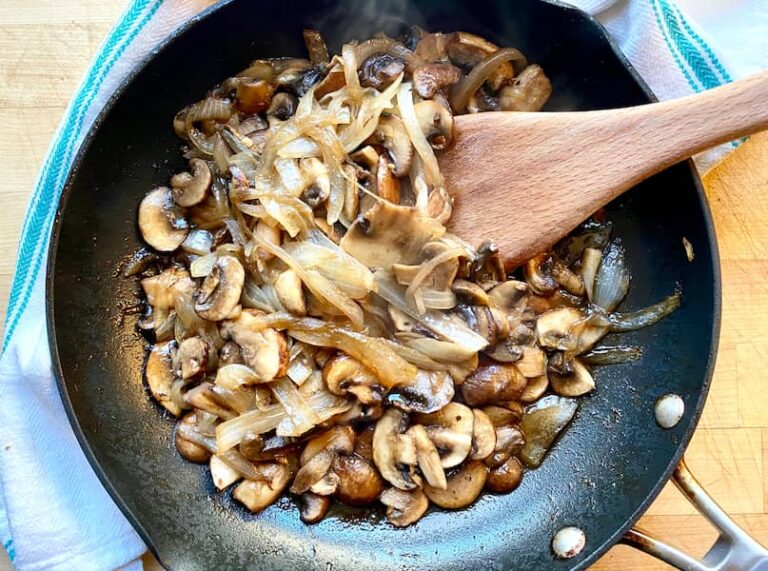Cooking dinner for a crowd can be a fun and rewarding experience, but it can also be stressful.
Cold food is one of the most common issues that a host may run into when trying to cook a delicious meal for a crowd.
If you’re cooking spaghetti for a dinner party, you may be wondering what the best way is to keep spaghetti noodles warm. Nobody wants cold pasta (unless it’s in a delicious pasta salad, of course!).
Having a great method for keeping noodles warm will allow you to cook them whenever it’s convenient. This frees up stove space and attention to focus on the more complex parts of the meal, like the sauce or meat.
How to Keep Spaghetti Noodles Warm
The main concerns when keeping pasta warm are the pasta sticking and burning to the bottom of its container, the noodles sticking to each other, and the noodles becoming overcooked. Other methods, such as keeping them warm in the oven, can run the risk of drying out the noodles.
These three methods address those concerns, leaving you with steaming hot noodles that are not overcooked, burnt, or sticky.
Tips for Keeping Spaghetti Noodles Warm
For best results, you should keep a couple of things in mind as you are cooking your spaghetti:
- Cook your noodles al dente. Al dente pasta gives you a little bit of wiggle room if the pasta continues to cook while being kept warm. This is especially important if you are tossing your pasta with any sauce. The last thing you want is mushy, overcooked noodles.
- Don’t run your noodles under cold water. It’s a common practice in the United States to run your freshly cooked noodles under cold water to instantly stop the cooking process.
You don’t want to cool your noodles in this case as the goal is to keep them warm without needing to reheat them. While rinsing in cold water washes off excess starch and prevents the noodles from sticking, we will be using a light coating of olive oil to achieve the same end.
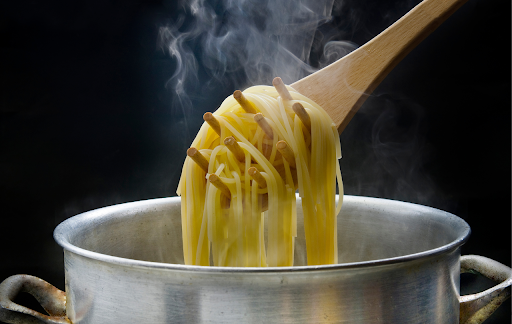
Slow Cooker/Crock Pot
Slow cookers, also called crock pots, are useful methods for both cooking food (over many hours) and keeping food warm. They heat at a very low temperature, which in this case allows us to keep noodles warm without burning them to the bottom of the pot.
A slow cooker is the best option and easiest way to keep spaghetti noodles warm if you don’t want to think about them again until dinner time.
To keep spaghetti noodles warm in the crock pot, start by greasing the crock, or the ceramic bowl insert, with olive oil or vegetable oil cooking spray.
Toss your freshly cooked spaghetti noodles in a little bit of olive oil then transfer them into the crockpot. Set the slow cooker to its lowest setting, place the lid on top, and forget about it until you’re ready to serve your noodles.
Double Boiler/Hot Water Bath
Double boilers are ideal for slowly melting or heating food without direct heat. A pot is filled with water and brought to a boil, then a second pot is placed on top and filled with food. The heat from the boiling water provides indirect heat for the food in the pan above.
This method is a great way to keep noodles warm because they are never touching direct heat, which can cause them to burn to the pan.
To keep spaghetti noodles warm in a double boiler, start by filling a large pot with a few inches of water and bringing it to a boil.
Once the water is boiling, add a small pot or a glass bowl on top and add the noodles, tossed in little oil. Place a lid on top of the pot or bowl to keep the moisture in and allow the noodles to remain in the double boiler until you are ready to serve them.
Be sure to check the double boiler regularly to ensure it doesn’t run out of water. When you check it, also stir the noodles to prevent uneven heating or burning.

Chafing Dish
Chafing dishes are often used in catering or cooking for a large crowd. They work much like the double boiler method but on a larger and more portable scale.
A chafing dish is a large pan filled with a little hot water and a slightly smaller pan that is set on top and filled with food. Underneath, the chafing dish is heated by a sterno can and the hot water keeps the food warm for many hours without the use of electricity.
The chafing dish method is probably not a realistic option for a small dinner party, but if you are cooking for a lot of people, a chafing dish is an ideal way to keep spaghetti noodles warm.
Chafing dishes will also allow you to keep the sauce, meatballs, and other hot dishes warm throughout an event.
Be sure to toss your noodles in oil, as you would with the other methods, to prevent them from sticking together.
Set up the rack and sterno, then set your water pan into place. Add a half inch of boiling water to the bottom pan, set the food pan into place, and you’re ready to go. You will be able to keep the spaghetti warm in the food pan for many hours without it cooking or burning.
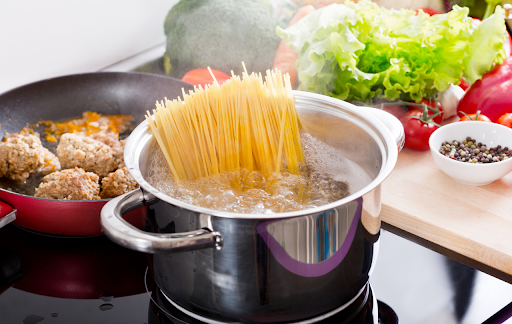
Frequently Asked Questions
How do I store leftover pasta?
Store your noodles in an airtight container in the fridge for 5-7 days. Be sure they are tossed with oil to prevent sticking.
What is the best way to reheat pasta?
The best way to reheat undressed, plain pasta is by tossing it in boiling water for about a minute. This easy method allows you to cook the pasta ahead of time and quickly warm it up to serve to a crowd.
Once your noodles are cooked and drained the first time, toss them with oil and allow them to cool. Store them in the fridge until you are ready to serve them.
To reheat your spaghetti noodles, bring a pot of water to a boil and toss the cold noodles in the boiling water. After a minute, your noodles will be hot. Drain and serve your noodles.
You can also store your pasta in individual portions in a plastic zip bag and boil it in small portions. This is the way most restaurants serve fresh, hot pasta without waiting the entire cook time to get it on your plate. This is the best way to reheat a single serving of undressed noodles.
If your noodles are already mixed with tomato sauce, you can reheat your pasta leftovers in the microwave or on the stove with a bit of additional sauce in the bottom of the pan.
Can I toss the pasta with sauce before keeping it warm?
You can toss your spaghetti with the sauce and keep that in your warmer so it’s ready to serve without any extra steps. Be sure you keep the noodles warm without simmering the sauce as that will lead to overcooked noodles.
Cooking Pasta for a Crowd
If you find yourself needing to cook a pasta dinner for a lot of people, you may be interested in these helpful tips and recipes!

